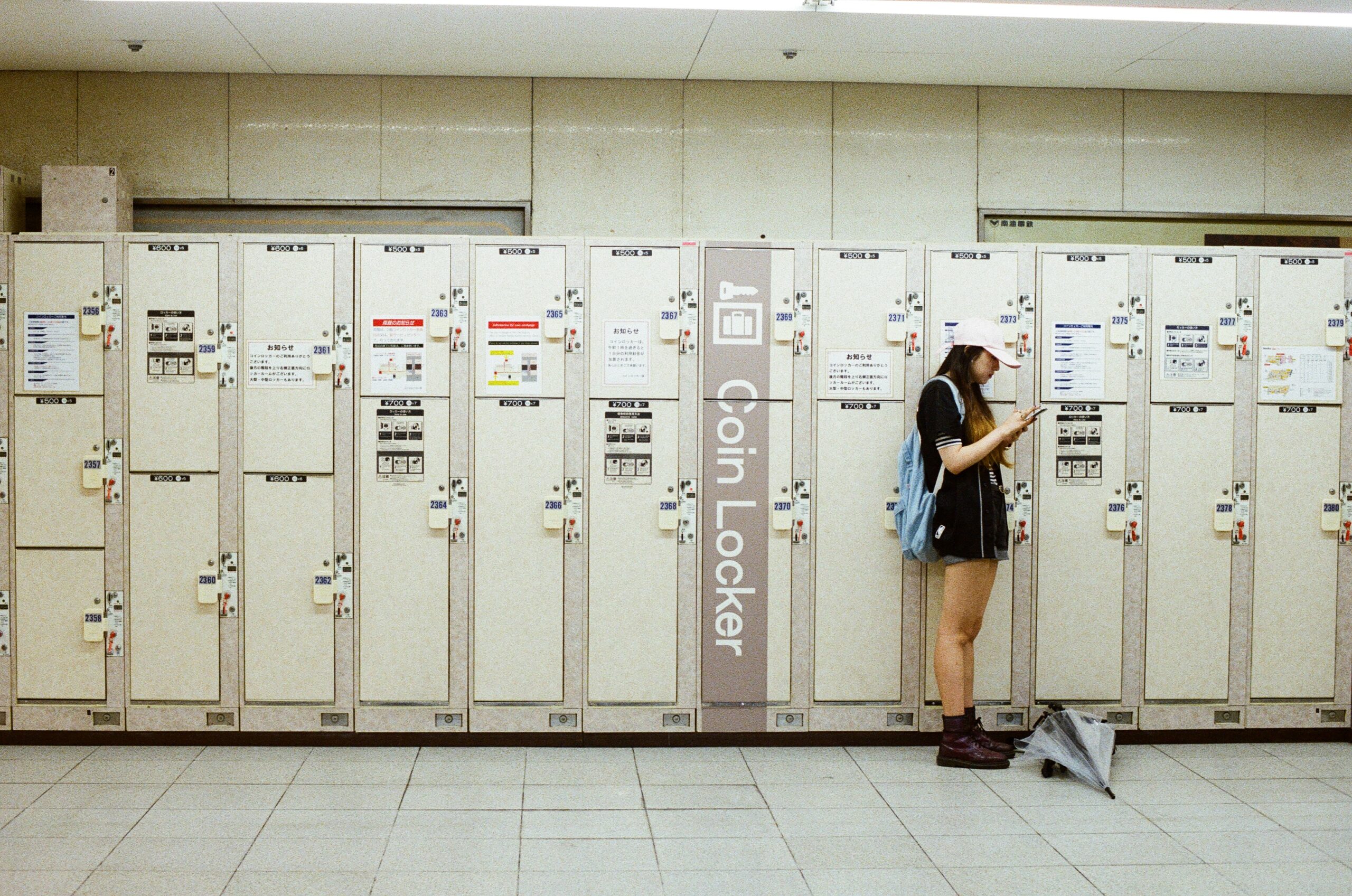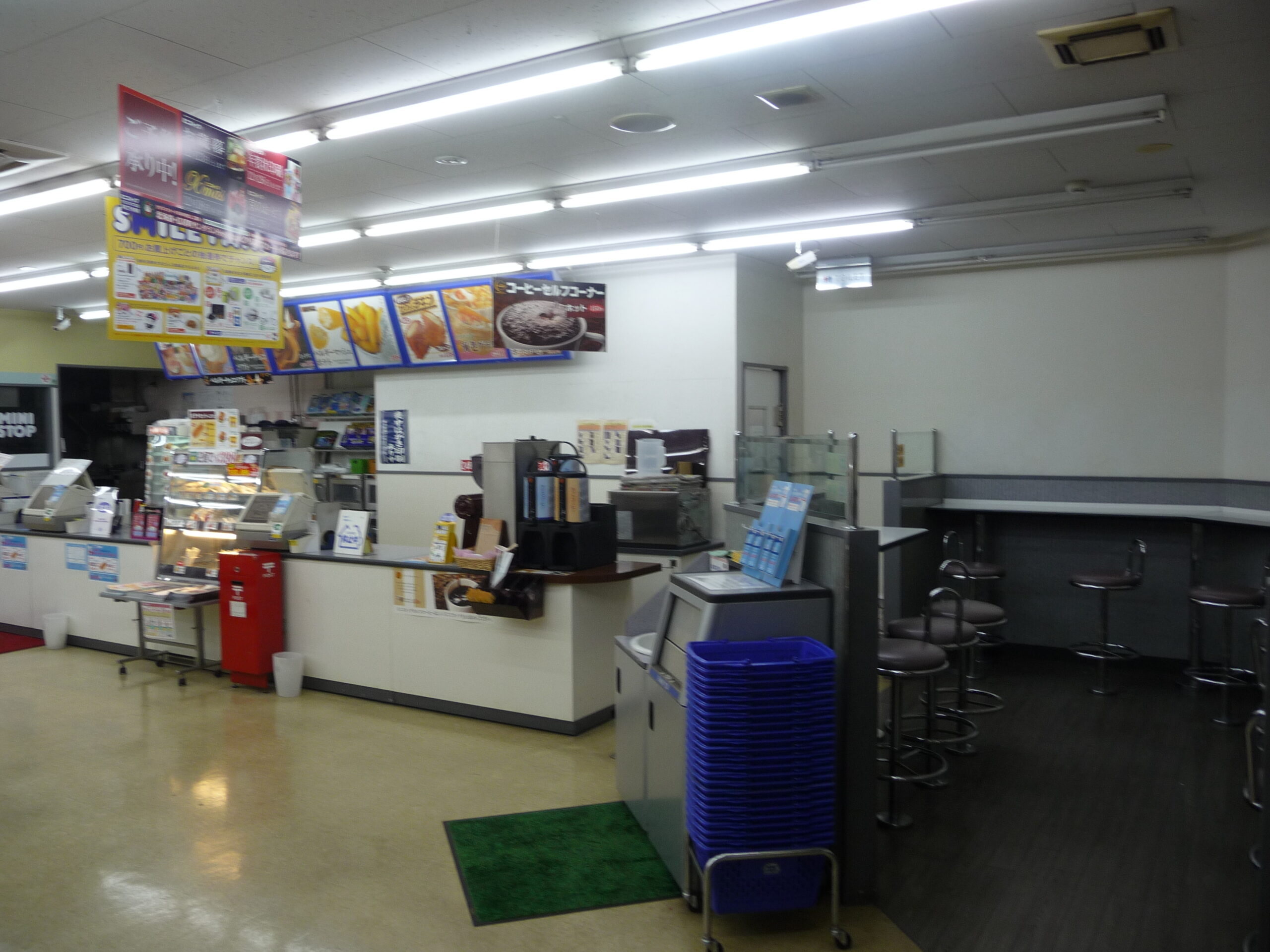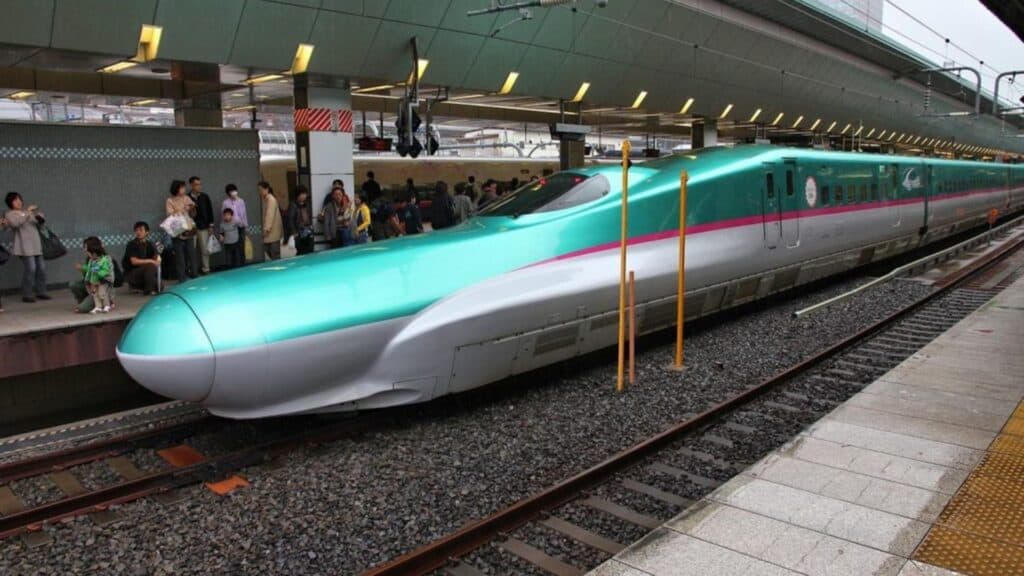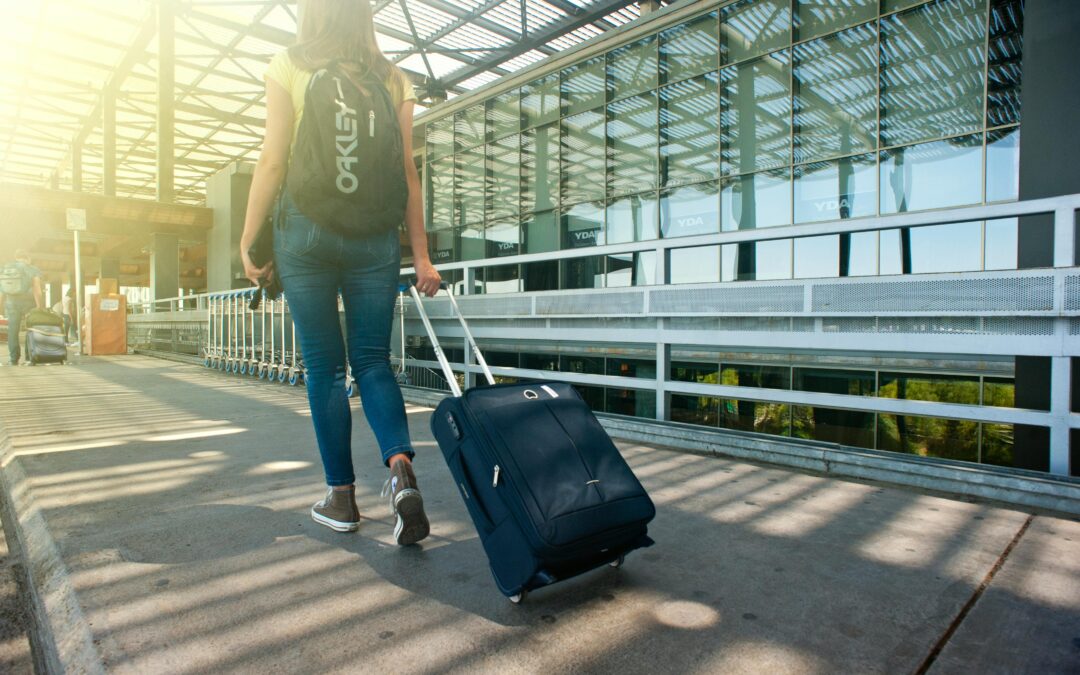So, you’ve finally made your way to Japan. After hours being cooped up in an airplane, probably sleep-deprived, you somehow still have all the energy in the world and are ready to go ahead and explore the country. Who can blame you? Japan is a dream for any traveller!
Whether your brand of adventure involves food, gadgets, cultural experiences, history, or art, Japan’s got it all for you. But let’s be real, dragging a massive suitcase around and travelling with luggage in Japan can quickly turn that dream into a bit of a nightmare.

I speak from experience. Picture this: all 4 feet 11 inches of me, trying to wrestle a luggage more than half my size onto the legendary Shinkansen, Japan’s bullet train.
This thing’s like a rocket on rails, stopping only for a nanosecond at each station (okay, that’s an exaggeration!), and there I was, struggling to cram my baggage in while the clock’s ticking. Spoiler alert: it wasn’t pretty, and I may or may not have held up the entire line.
Travelling around Tokyo with both hands full of bags? The trains are packed tighter than a tin of sardines at certain hours, and the train slightly shakes at the change of tracks, so keeping your balance without bumping into other passengers could be a challenge.

Oh, and don’t even get me started on how I took the train all the way to Kamakura, and zipped through Komachi-dori—ignoring all the tasty Japanese snacks!—because I was excited to pay my respects at Tsurugaoka Hachimangu. Only to get there and realize that the shrine is atop a massive flight of stairs. Yep, there was no way I was making it to there while dragging my neon-pink 80-litre luggage.
So, here I am, writing this blog post to spare you from the embarrassment and disappointment that I had to endure. Let’s make sure your Japan adventure is a breeze, not a battle with your bags, with this guide to travelling with luggage in Japan.
Solutions to Luggage Woes
Let me introduce you to two game-changing solutions for tackling the age-old conundrum of hauling your gear around Japan: coin lockers and hands-free travel services. These savvy strategies can turn your journey from a logistical nightmare into a stress-free adventure.
Coin Lockers: Your Travel Buddy

Coin lockers are the unsung heroes of Japanese travel. You’ll spot them not only in nearly every train station but also at some of Japan’s most popular tourist sites. For instance, major attractions like Tokyo Disneyland, Kyoto’s Kinkaku-ji (Golden Pavilion), and Osaka Castle often have coin lockers available for visitors.
You might be anxious about leaving your belongings in these lockers, but rest assured that they are generally considered safe and trusted not just by tourists but by locals as well.
Aside from Japan having one of the lowest crime rates in the world, coin lockers are usually located in well-lit areas that are monitored 24/7 with cameras. Station staff also regularly maintain them to make sure that they are in good working condition and resistant to tampering.
Coin Locker Sizes and Pricing
These lockers are available in a variety of sizes, each designed to cater to different storage needs. Remember, the pricing below is for a day’s use—perfect for those full-day explorations where you just don’t want to lug your bags around.
- Small Lockers: Ideal for stashing a daypack or some fresh finds from a shopping spree. These little lifesavers cost about ¥300 to ¥400 per day. They come in snug sizes of roughly 257mm x 355mm x 575mm or 317mm x 355mm x 575mm. Just right for tucking away your goodies and hitting the streets bag-free.
- Medium Lockers: These are spot on for your carry-on or a few items that are on the bulkier side. Set aside ¥500 to ¥600 for a day of hassle-free storage. Measurements are about 550mm x 355mm x 575mm—ample space to accommodate that extra load.
- Large Lockers: Meet the best pal of the cumbersome suitcase. If you’re hauling around something heftier, these will cost you between ¥700 to ¥800 for each day’s use. Dimensions stand at a roomy 880mm x 355mm x 575mm, giving your larger luggage a break from your travels.
- Extra Large Lockers: For when you’ve got more than one bag or a combination of various types of luggage. These juggernauts are priced at about ¥900 per day and have hefty dimensions of 1,153mm x 355mm x 575mm—ideal for when you’re travelling with more than just the essentials.
Always remember, these prices are for 24-hour periods, typically rolling over at midnight or a specific time dictated by the locker’s location.
So, if you stash your bags in the late afternoon and plan to retrieve them the next morning, you might be looking at paying for two days depending on when the billing cycle resets. Keep an eye on the clock to avoid unexpected charges!

Also, don’t worry about not having the exact amount of coins for payment. Among the rows of coin lockers, you would usually find machines that allow you to exchange bills into coins. Look for the sign that says 両替 (ryougae), usually in white font set against a red background.
If there doesn’t seem to be any ryougae machine around, head over to the nearest shop you can find—may it be a convenience store, a cafe, or what have you—and kindly ask staff to break your bills by saying, “Sumimasen ga, osatsu o kozeni ni ryougae shite moraemasen ka?”.
Guide to Using Coin Lockers
While you can use IC cards with some coin lockers, many of them work with keys and live up to their name and demand a trusty ¥100 ‘coin’. For those traditional key-operated lockers:
- To Stash Your Stuff: Hunt down an empty locker (you can tell it’s empty if the key is still inserted), stuff in your gear, shut the door, insert the coin in the slot, then twist and pull out the key.
- To Grab Your Gear: Pop in your key, give it a twist, and open up your treasure trove.
If you go over the basic time limit, prepare to cough up a bit more cash, conveniently paid in ¥100 coins.
For the lucky ducks with lockers that play nice with IC cards or numeric codes:
- To Store Your Stuff: Tap ‘Deposit’ on the touchscreen, follow the prompts to pop your goodies in the box, lock up, pay up, and snag a receipt with a code.
- To Retrieve Your Gear: Hit up ‘Retrieve,’ punch in your code or scan your IC card, and grab your loot.
Additional Tips
Snap a pic of your locker and its surroundings for a quick find later on.
Luggage Forwarding for Hands-Free Travel

Imagine zipping across Japan without the hassle of dragging your bags on and off trains, up stairs, or through crowded streets. Sounds good, right? This is where luggage forwarding, known in Japan as “takuhaibin,” comes into play, allowing you to send your luggage ahead to your next destination while you travel light and worry-free.
What is Luggage Forwarding?
Luggage forwarding services in Japan are a game changer, designed to ship your bags from one location to another, so they’re waiting for you when you arrive. This could be from airport to hotel, hotel to hotel, or even hotel to home. It’s safe, reliable, and used widely by both locals and tourists.
Before taking advantage of luggage forwarding services, take note that getting your things from one place to another usually takes overnight.
But if you’re looking to promptly send luggage between the neighboring cities of Kyoto and Osaka, you’re in luck as Crosta offers same-day delivery within these areas. They have shops in Osaka, Shin-Osaka and Kyoto, but be sure to check out the official website if you’re planning to use the service as the opening and closing times of the shops differ (often between 8:00 AM and 9:00 PM).
Wondering if luggage forwarding services in Japan are safe? They generally are. Providers of these services—such as Yamato Transport and Sagawa Express—are reputable companies that have built trust among locals and tourists over the years through their strict protocols and quality standards.
If you’re still not convinced or, like me, just like to know where your stuff is at all times, know that many of these luggage forwarding services offer tracking systems that allow customers to monitor the location of their luggage in real time, providing peace of mind and ensuring transparency throughout the delivery process.
How to Forward Luggage in Japan
Whether you’re hopping between cities or planning to explore Japan without the weight of your bags, here’s how you can easily forward your luggage either from your hotel or a local convenience store.
From Your Hotel
Many hotels in Japan provide luggage forwarding services directly through their reception. Here’s a step-by-step guide on how to do it:
1. Inquire at Reception: Ask at the hotel reception about their luggage forwarding service. Most staff at major hotels are accustomed to arranging this for guests and can provide you with the necessary forms right away.
2. Fill Out the Form: You’ll need to complete a form with details like your destination address (hotel, airport, etc.), expected delivery date, and sender information. Double-check the details to avoid any mistakes.
3. Payment: Fees are based on the size of the luggage and the distance it will travel. The hotel reception will inform you about the cost, and you can usually pay directly there.
4. Hand Over Your Luggage: Once everything is set, you’ll leave your luggage at the reception. They’ll handle the rest, ensuring that your bags are forwarded to the next destination securely.
5. Tracking: Some services provide tracking numbers, allowing you to check the status of your luggage online.
From Convenience Stores

Convenience stores like 7-Eleven, Lawson, and FamilyMart are ubiquitous in Japan and offer a wide range of services, including luggage forwarding:
1. Visit the Store: Go to the nearest convenience store. Look for the dedicated section for package delivery services, or ask a staff member for assistance.
2. Fill Out the Shipping Form: Use the provided forms to enter the destination address, your contact information, and choose the delivery date. If unsure, store staff are usually very helpful and can assist you in filling out the form correctly.
3. Weigh and Pay: The staff will weigh your luggage to determine the cost. After you pay, they will provide you with a receipt that includes a tracking number for your shipment.
4. Leave Your Luggage: After payment, the store will take care of the rest. Your luggage will be securely stored until it is picked up for delivery.
5. Track Your Luggage: Using the tracking number provided, you can monitor the progress of your luggage as it makes its way to your destination.
Luggage Forwarding Costs
When you’re thinking about using luggage forwarding services in Japan, the costs aren’t just plucked out of thin air. Nope, they’re all about the size of your stuff and how far it’s gotta go. Here’s the lowdown:
- Size Categories: Your luggage gets thrown into one of these size categories, which basically decides how much you’re gonna pay. You’ve got everything from Size 60 (up to 60cm and 2kg) to Size 200 (up to 200cm and 30kg).
- Cost Estimates: Sending your standard suitcase from Tokyo to Kyoto? Plan to fork out somewhere between ¥1,500 and ¥2,500. But hey, if your luggage’s bigger or heavier, expect those costs to creep up. And if you’re shipping all the way to Hokkaido? Well, you better believe that’s gonna cost you a bit more thanks to the longer journey.
Now, here’s the sweet part: you can score discounts if you’re sending multiple parcels and if you’re all about that digital life (as in cashless payment). Services like Yamato Transport dish out digital discounts and cut you a deal if you’re shipping a bunch of stuff to the same spot at once.
Before you dive in, it’s a good move to whip out the measuring tape and size up your luggage. That way, you can suss out which size category it falls into and get a ballpark figure on costs. For the nitty-gritty on costs and what services are on offer, your best bet is to hit up the official Yamato Transport website—they are the leader in the pack, known for their black cat logo.
They’re super reliable and offer services right from convenience stores or hotels. Sagawa Express is another key player, offering similar services. Both of these providers have systems in place to ensure your luggage arrives safely and on time.
Travel Light and See More
Traveling light isn’t just about less weight to carry—it’s about gaining richer experiences. Managing your big bags effectively in Japan not only makes your trip easier but also unlocks the door to vibrant cities and serene landscapes.
Forget the hassle of dragging your stuff everywhere. With services like coin lockers and luggage forwarding, you can breeze through Japan’s efficient transport network and dive headfirst into local culture.
And the best part? You’ve got options aplenty. Whether you’re stashing your suitcase at a train station, or having it forwarded from your hotel or even a convenience store, you’ve got the freedom to plan your trip just the way you want.
Of course, before opting for these very convenient but paid services, we highly recommend checking if there are any free options that you can take advantage of.
For example, most hotels will let you leave your luggage before and also after check-in.

And don’t let my inability to estimate my own luggage-carrying powers discourage you from loading your bags onto Shinkansens. Bullet trains actually do have quite a lot of space between seats as well as in the overhead compartment. There are even seats with extra luggage space!
Sometimes, taking your bags with you while going from one point of the country to another just makes more sense as it means you have everything you might need within reach and won’t have to wait overnight for your stuff to arrive.
Having planned countless unforgettable trips, we at Flip Japan find it best to use luggage forwarding if you are staying somewhere just for a night and can easily prep an overnight backpack for that trip while the rest of your things zip over to your next destination.

We also find these services helpful for when guests are heading to the airport from another city and want to send everything directly to the airport beforehand. This still takes overnight and so must be arranged well to make sure your luggage doesn’t miss your flight.
So, pack smart, plan wisely, and get ready to explore Japan like never before! And if you ever need a hand navigating Japan’s wonders, Flip Japan Guide has got your back. Hit us up; we’re here to make sure your trip isn’t just memorable, but truly hassle-free.


Trackbacks/Pingbacks